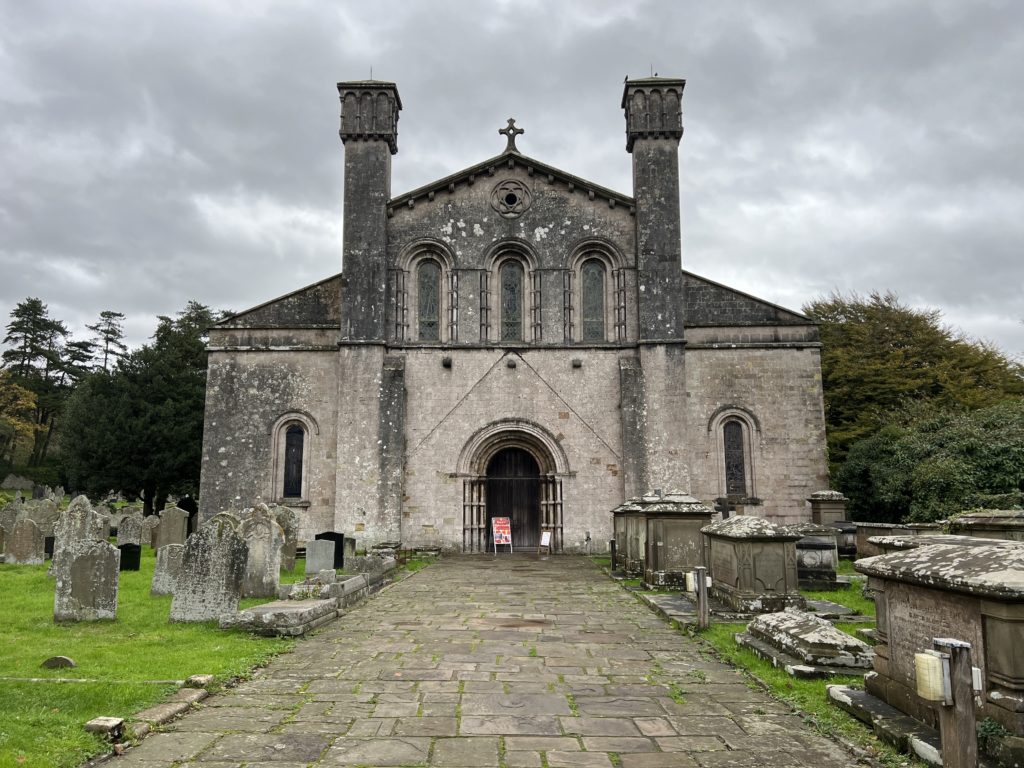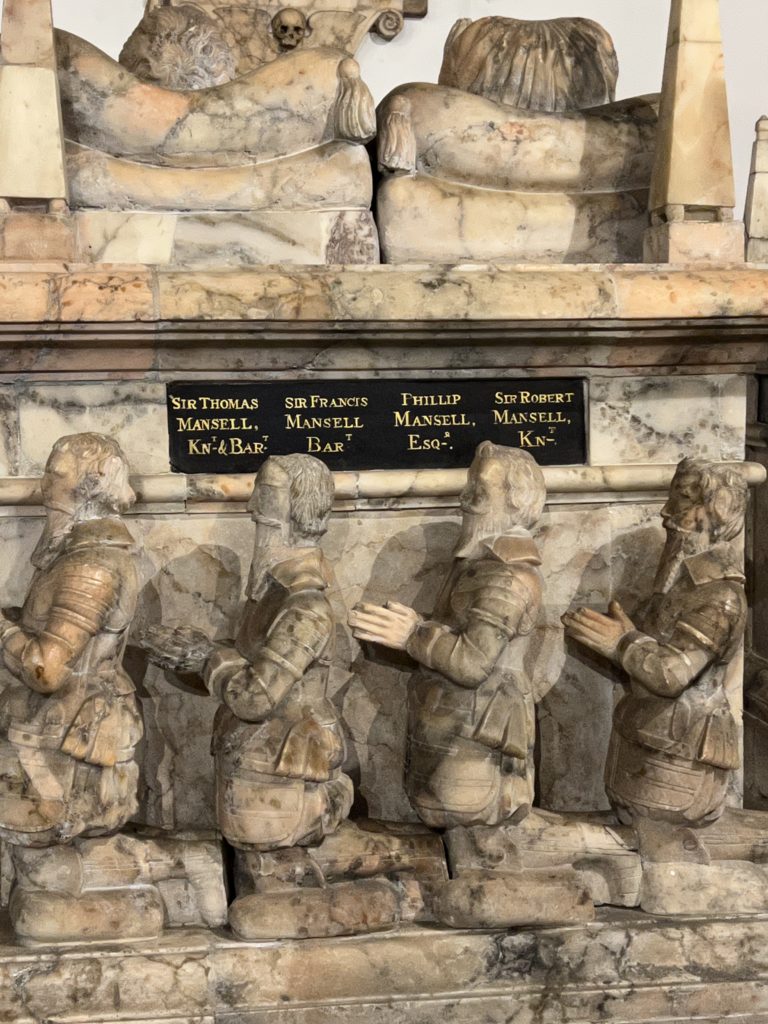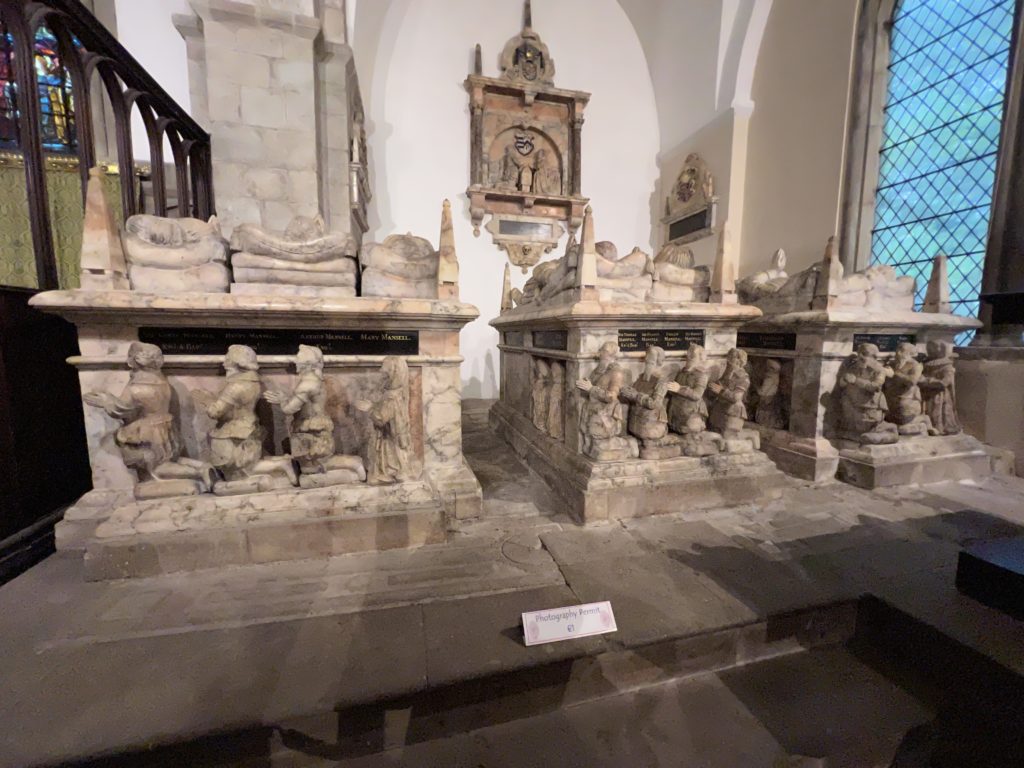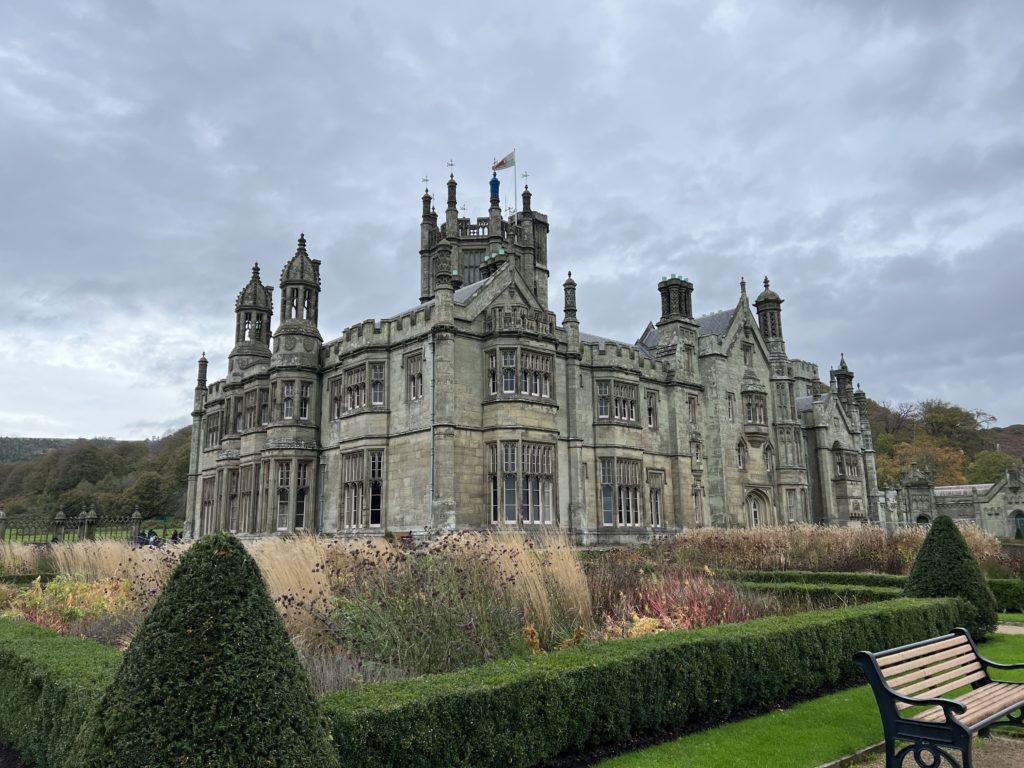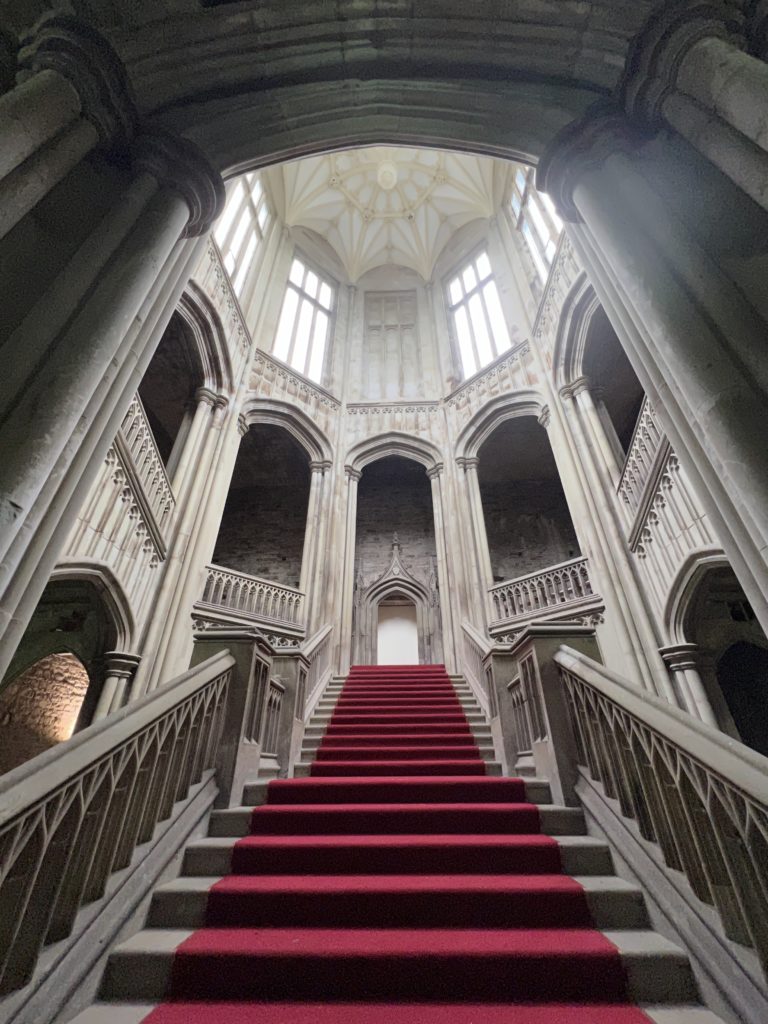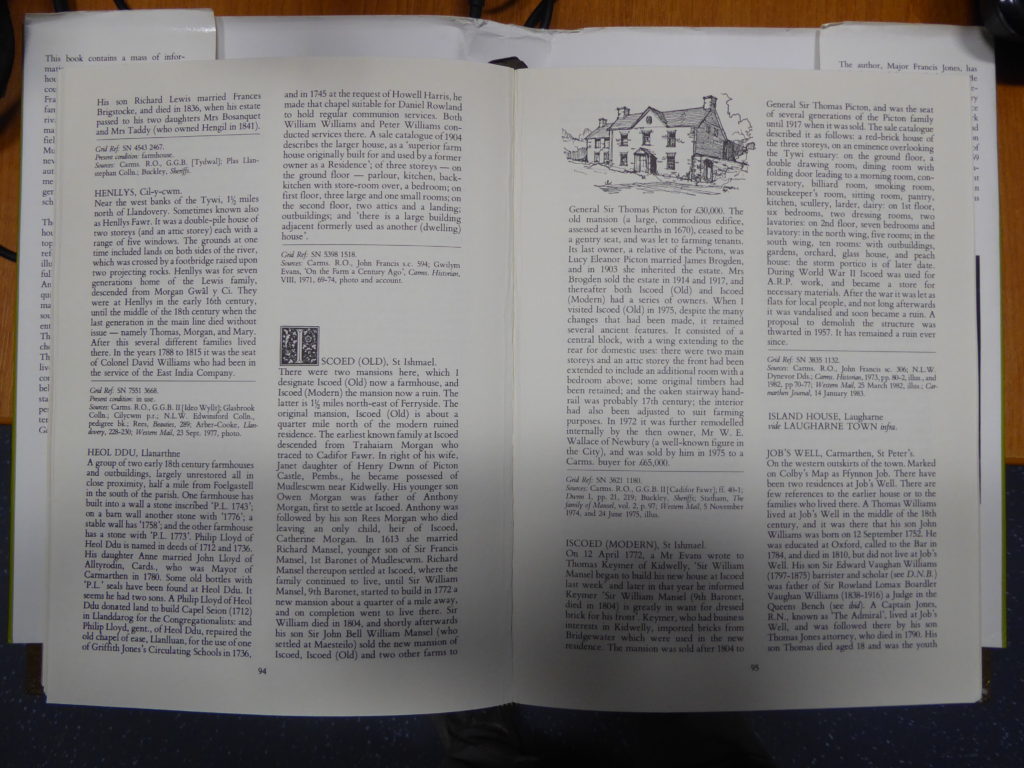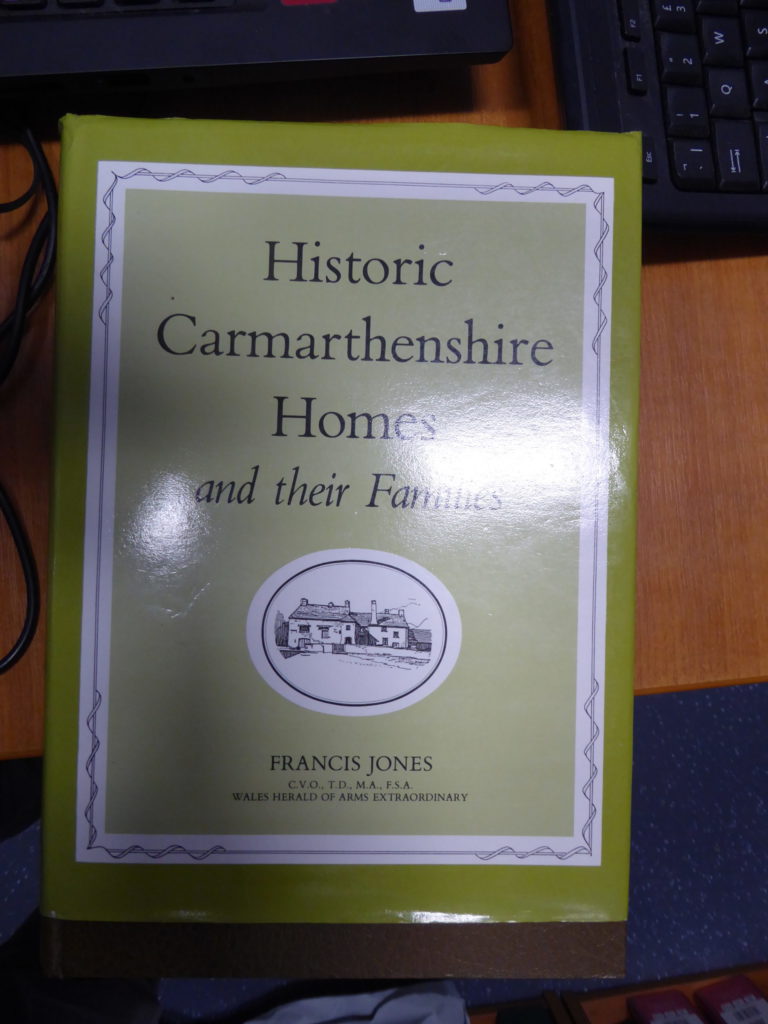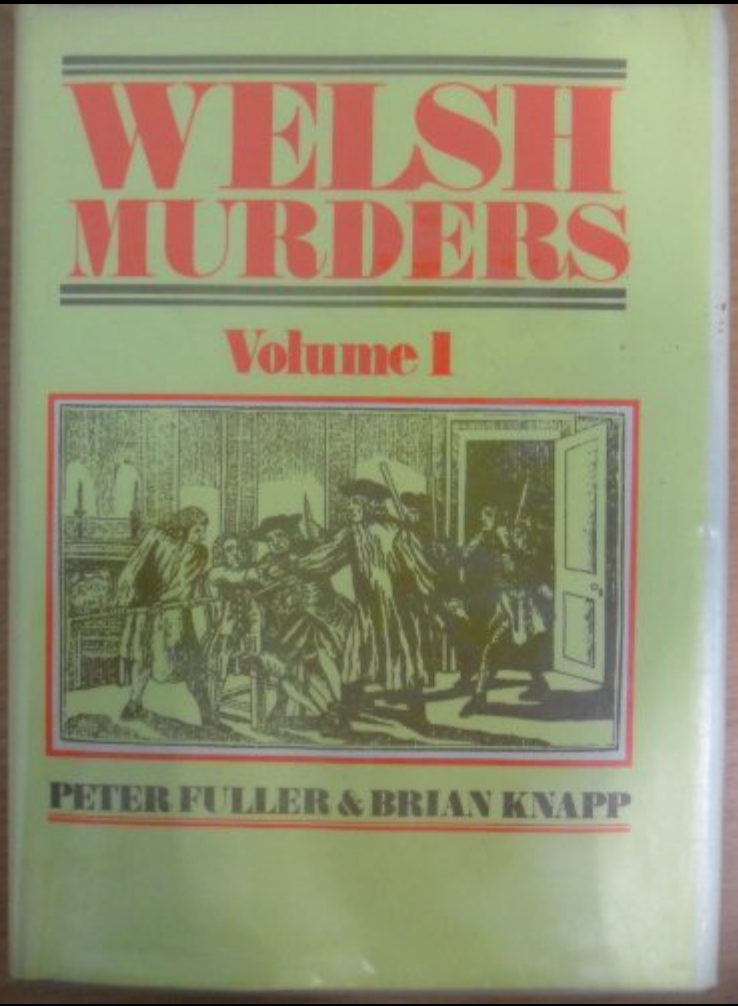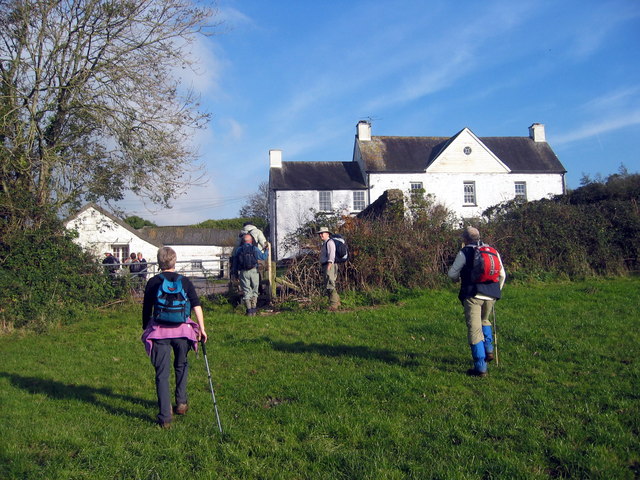We were lucky to have the time to stop off and explore the Margam Abbey and Castle on our way back from Wales. This had been the family home of a branch of the Mansel family and is now owned by Neath Port Talbot County Borough Council and run as Margam Country Park.
Within Margam Country Park can be found Margam Abbey, a ruined Cistercian monastery; Margam Castle, a neo-Gothic country house that was once the seat of the Mansel Talbot family; and the 18th-century Orangery.
I really wanted to visit Margam Abbey but we were also able to walk up to Margam Castle too.
Margam Abbey
I bought a photography permit for £1 and took some photos of the beautiful Mansel tombs within the Mansel Chapel at Margam Abbey. The four tombs show members of the Mansel family who held the Margam Estate following the Dissolution. The alabaster tombs illustrate the family wealth.
As well as the alabaster tombs showing recumbent effigies (the males of the line appear in full armour, their wives wear appropriate costume from the period), there are several wall memorials too.
The four alabaster tombs are for Sir Rice Mansel of Oxwich and Penrice (1487-1559), Sir Edward Mansel (1531-1585), Sir Thomas Mansel (1556-1631) and Sir Lewis Mansel (1638).
The wall memorials are dedicated to Sit Edward Mansel, Sir Thomas Mansel, Sir Rawleigh Bussey, Sir Rich Mansel and Katherine Bussey.
From here it was a short walk to Margam Castle which was built for Christopher Rice Mansel Talbot (1830-1890) in 1840, designed by Thomas Hopper in the Tudor Gothic style.
You cannot see much of the house today although I was very happy to be allowed inside. We did get to see the magnificent central staircase.
There are formal garden and a stable block which now houses a cafe and shop.
There was a wedding taking place on the day we visited so we were unable to visit the Orangery. This was designed by Anthony Keck to house a large collection of citrus trees and built between 1787 and 1790. It is the longest orangery in the British Isles.
We enjoyed our unexpected trip to Margam Abbey and Castle. It is well worth a visit, especially if you have a family connection.

